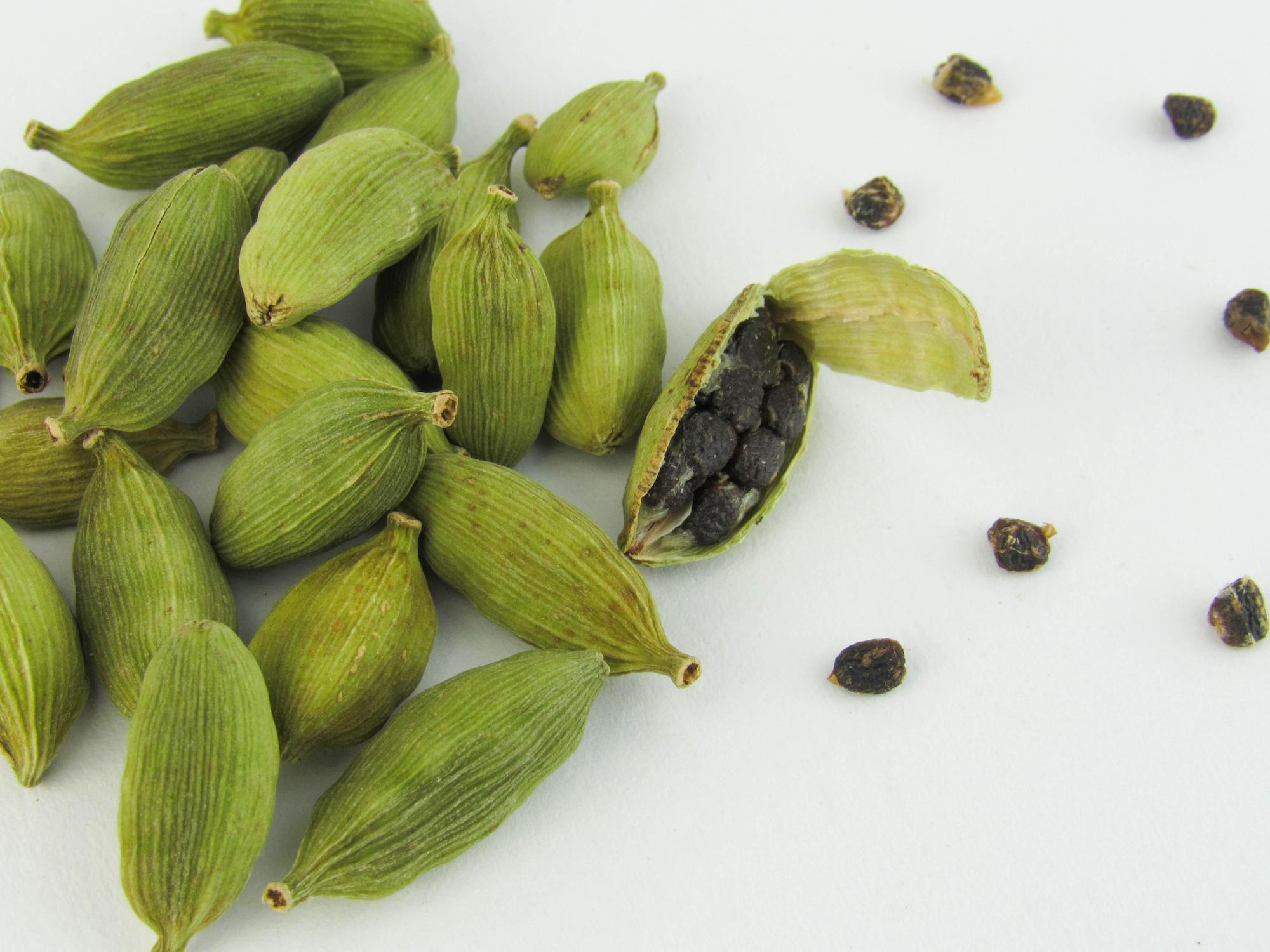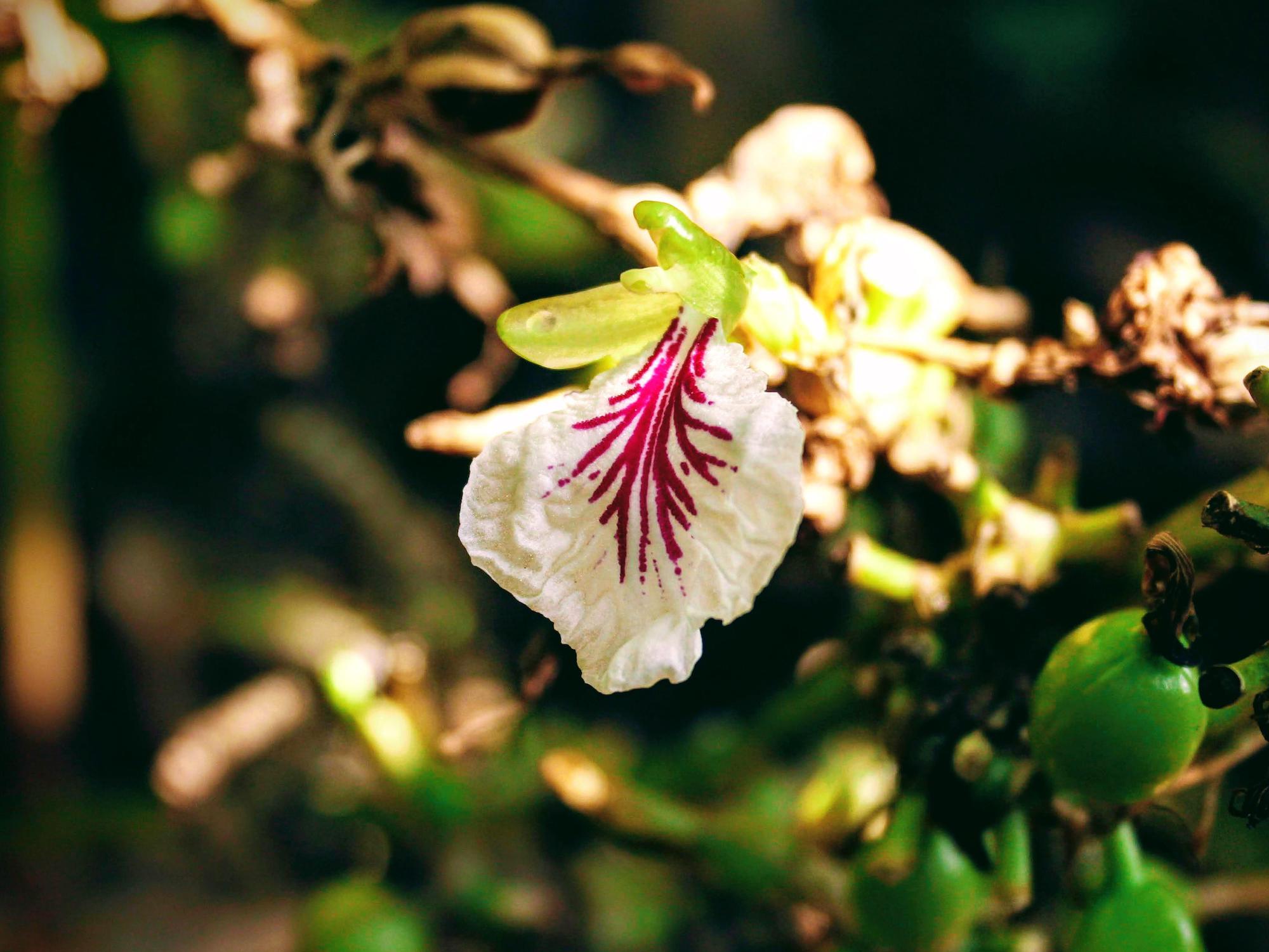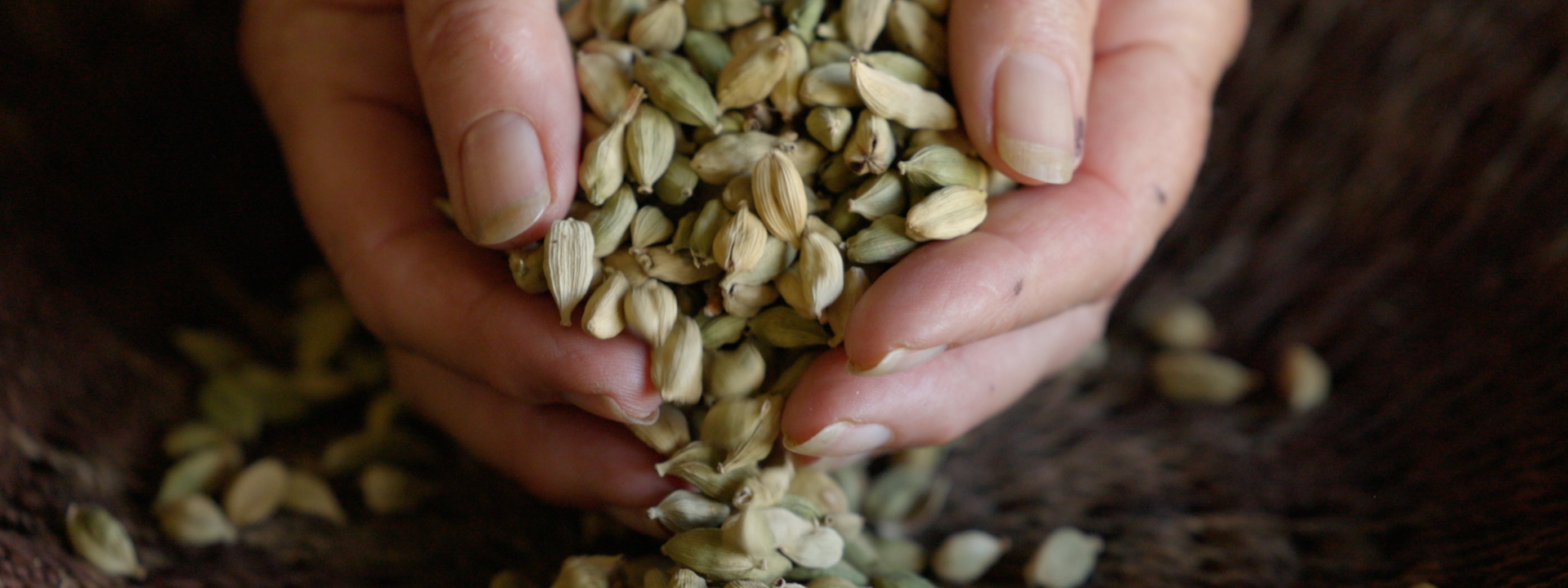Elettaria cardamomum
ENCYCLOPEDIA BOTANICA / CARDAMOM
Cardamom is heady and sensual, and a little goes a long way. Too much in the mix and it’s all you can taste, but used judiciously it can increase the sophistication of other aromatics, underscoring citrus, floral and fresh qualities in these other ingredients.
Description & Habitat
Elettaria cardamomum (also known as green or true cardamom) is a member of the Zingiberaceae (ginger) family, and a native of Southern India, where the majority of commercial crops are still cultivated. Sri Lanka and Guatemala also produce high-quality cardamom crops, something we can attest to, as much of what we have been working with in the Lab recently has come from Guatemala.
Cardamom is a tall orchid-like plant that thrives in rainforests. The rhizomes of this herbaceous perennial spread horizontally near the ground, and its stems can grow upwards of 6 metres (20ft). Around the plant’s third year it begins to bear spikes of orchid-like flowers — yellow and white striped blooms with a scarlet or violet centre. The fruits are smooth green pods containing two rows of dark seeds, reddish-brown in colour. Seed pods are generally sold intact, as the unbroken fruits are gathered before they are ripe, to preserve flavour and aroma.
Cardamom blooms over a protracted season requiring pickers to return again and again to harvest the fruit. Partly because of this it’s one of the most expensive spices by weight in the world (just behind vanilla and saffron).
Parts used: Seeds

Cardamom seeds

Cardamom flower
Aroma & Flavour Profile
Crushed cardamom seeds have a powerful aroma that’s impossible to forget. Mentholic-sweetness, floral-spice, citrus. It’s a complex scent with many different elements, which makes it so versatile for building aromatic bridges and adding mystery to recipes and blends. Too much and you have little choice but to just enjoy that fantastic cardamom hit, but judicious use will increase the sophistication of other flavours, and soften bitterness.
One of the first things you will notice when smelling crushed cardamom is its freshness—because it’s rich in cineole which has a sweet, mentholic-almost-eucalyptus note. This camphorous nature can give it a minty scent, and adds a cool freshness to whatever you’re working with. Then you get sweetness, and often florality (especially on breathing out). Interestingly, it depends on the variety you’re dealing with whether it tends towards more camphor/eucalyptus (Malabar) or more warm spice and floral (Mysore).
You can often pick up a ‘anty’ formic note to fresh crushed cardamom too. Interestingly, once distilled cardamom loses its overwhelming ‘black ant’ perfume and is transformed into something quite different, smoother and sweeter.
If you place the seeds in your mouth and wait for your saliva to start breaking it down, you can note a slimy texture forming around the seeds. This softens the intense effects of the eucalyptol, slowing the delivery into the mouth, and it becomes quite sweet—like a lozenge. There is an element of this effect when it’s macerated in a spirit and certainly comes over in a hydrosol.
Green cardamom should not be confused with black cardamom (Amomum subulatum) which is quite different with a deep, earthy smokiness. Niki Segnit, author of The Flavour Thesaurus, describes them as ‘like a green cardamom after a Laphroaig bender’.

Recommended Techniques
• Hydro/steam distillation (hydrosol) • Steam distillation (EO) • Spirit distillation (Gin/aromatic spirits/liqueurs) • Tincture (culinary and liqueurs) • Simple infusions (teas) • Cooking •
Uses
Culinary
Cardamom features in Indian, Arab, Persian, and North African culinary traditions—following the ancient trade routes. It’s also been embraced with gusto in Scandinavia, which has the highest consumption of cardamom per capita in the world, (some sources put Norway’s consumption as high as 30 times more than the average rate). Stories differ on how this came to be, but a popular theory is that it came from the Moors after they settled in the Iberian peninsula.
Cardamom has been used as a condiment for centuries in India and the Middle East—for cleansing the palette and easing digestion in much the same way as other cultures use aperitifs and digestifs. It’s widely-used to flavour both tea (like chai) and coffee. The Bedouin way of preparing Arabic coffee is to grind coffee beans with cardamom seeds in equal measure and drink in tiny cups with or without sugar and perhaps a drop of orange blossom water. In food, it’s central to a lot of Scandinavian pastries and sweets, and in savoury dishes it’s used to cut through fattiness. Cardamom goes well with lamb, and adds complexity to more bland, monolithic flavours like cream, nuts and rice. Tinctures of cardamom (extracts) are used by some cooks in their kitchens, akin to vanilla essence.
Spirits
You’ll find cardamom in a wide variety of spirits and liqueurs (especially coffee and nut liqueurs) vermouths and the bitter-sweet Italian amaros. We especially like to use it in gin blends—the addition of green cardamom seed lends a eucalyptol element, opening up the gin blend and adding a cooling tone—like breathing in cold fresh air. It also works well with so many other gin botanicals as it can highlight or amplify other ingredients with citrus notes, florality, sweetness, warmth or mentholic freshness—depending on what you use it with. For example it will bring out the citrus notes in coriander and underscore the citrus tones in bitter orange while also marrying with the botanical’s florality and sweetness. This is a great way to layer flavour and add complexity to your spirit blends. You can also use a tincture of cardamom sparingly in your bitters blends.
Hydrosol
Cardamom produces an intense and deeply saturated hydrosol. As the pods are rich in water-soluble compounds they yield a saturated, rich cloudy hydrosol that will clear over a few weeks. Crush the whole pods to open the skins and soak overnight to soften (we were very indulgent and soaked our cardamom pods in rosewater in the Distilling Essential Oil course). The aroma is intense—at first there is that strong eucalytus/mentholic note which is softened by its varied constituents such as linalool and limonene (with their floral citric fresh and sweet characters). We often use cardamom hydrosol in zero ABV drinks, as it gives a spirit association, adding to both the nose and flavour. Use in small amounts as it is high on the intensity scale.
Essential Oil
Cardamom is rich in essential oil, and we love distilling it for EO here at The Alembics Lab, though it is decadent. It’s one of the main stars of our Distilling Essential Oil course, as it’s the perfect botanical to illustrate combo-distillation (producing an essential oil and a quality, saturated hydrosol in the same distillation). The essential oil has a fabulous crisp clarity, while the hydrosol is delicious, but slightly more foggy and muffled. Have we already mentioned it’s intense? So you only need a few drops in a carrier oil to get a beautiful massage oil, or a few drops in a room diffuser.
Perfumery
Cardamom’s scent profile makes it both a popular top and middle note in perfumery. It adds brightness like citrus, and lends a spicy-sweet yet refreshing note. It freshens cloying florals and lifts heavy spice notes, blending well in Chypre Eau de colognes and oriental blends. Calvin Klien’s CK One has cardamom working in the blend to build that lasting freshness.
Skin care/cosmetics
The clever ladies and Wellington Apothecary make a beautiful body butter with Rose and Cardamom. Cardamom and rose is a classic blend, as the cardamom shakes hands with the sweet, honeyed florality of rose, while lifting its freshness up a notch. Delicious.


